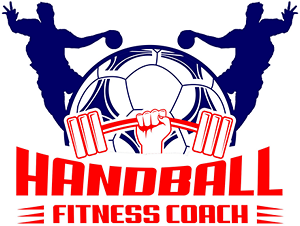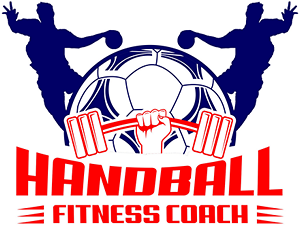ACL injury in Females
The structural and anatomical differences (as well as a little contribution from hormonal differences) that exist between males and females, and the effect that they can potentially have are no better illustrated than in the incidence of ACL (anterior cruciate ligament) injuries, which are far more prevalent in female athletes than they are in male athletes.
 When it comes to engaging in high impact joint loading like playing a sport like handball, coaches and physical conditioning experts are almost unanimous in raising their concerns about this, and indicating that a specific emphasis must be placed on conditioning specifically to reduce the likelihood of this happening with their female athletes.
When it comes to engaging in high impact joint loading like playing a sport like handball, coaches and physical conditioning experts are almost unanimous in raising their concerns about this, and indicating that a specific emphasis must be placed on conditioning specifically to reduce the likelihood of this happening with their female athletes.
We are going to look at various comments from several world renowned coaches as well as rehabilitation and conditioning experts regarding the higher incidences of ACL injury in female athletes and their opinions on what should be done about it, and then discuss these comments in regards to what it means in terms of your handball strength and power training.
In Prevention of knee injury in women, Timothy E Hewett & Gregory D Myer state;
“A possible underlying mechanism for why women have more noncontact ACL injuries than their male counterparts is growth without sufficient power. Men experience a significant increase in neuromuscular strength and coordination as skeletal growth and maturation progresses, a so-called neuromuscular spurt not often observed in women. As bone length and body mass increase in men, they also demonstrate greater neuromuscular control of the knee joint than women, allowing men to better absorb loads. In lay terms, growth results in larger machines in both sexes, but a male subjects mature, they adapt with disproportionately more muscle ‘horsepower’ to match the control demands of their larger machine.”
“As a result of insufficient neuromuscular adaption, female knees are exposed to greater ground reaction forces and high external knee abduction moments (load), particularly in landing, pivoting, and deceleration sports.”
“Increased bone length and body mass, in the absence of matching adaptions in neuromuscular strength and coordinated muscle recruitment, exposes the female knee to greater load and likelihood of ACL injury.”
What Timothy and Greg are highlighting here ties in with the fact that prior to puberty, incidences of ACL injuries between the 2 genders show no real difference in frequency in similar populations, yet post this maturation stage is when the larger number of female ACL injuries start to occur in comparison to the men. They are indicating that the difference that occurs here is because whilst females bones and muscles grow in size and length just as the guys do during this growth and maturation stage, females do not experience an equal natural growth in strength and neural control over this increased size.
I have been an advocate for years for strength training being even more important for females than males in all populations that I work with. This often surprises people given that weight training is more often associated with men. However this strength and neural deficit is a classic example of why I believe this to be the case.
“The improved ability to handle body weight and control the body is crucial in the prevention of injuries, especially in the lower extremity.”
“Female athletes are usually deficient in strength for a number of reasons. Therefore there is room for improvement – a huge upside.”
Vern Gambetta
Paul Gamble also discusses in Strength & Conditioning for Team Sports, the large body of statistics that identify the great majority of ACL injuries as being non-contact in nature.
Indeed Paul Gamble says that ‘the process of specific training prescription should begin with a needs analysis of the particular sport, including research into the injuries commonly sustained during competition.’ We have already covered this needs analysis in detail in Strength & Power Training for Handball as well as Agility Speed & Conditioning for Handball, where we highlighted ACL injury as being one of the more prevalent serious injuries in handball. Now we are also highlighting that it is far more likely to occur in female players than in male players.
“There is an apparent gender difference in ACL injury incidence in team sports. Female athletes suffer ACL injuries 4 to 6 times more often than their male counterparts taking part in the same sports at the same level. The high incidence in handball, especially among females, represents a significant challenge. The good news is, however, that prevention is possible through specific training programs.”
Grethe Myklebust
Between Basketball & Rugby
The Risk of Injury in Handball
A key approach to this problem that is seemingly universal amongst coaches and conditioning specialists is to perform certain strength and specific neurological exercises as often as possible in the conditioning program. Most advocate for certain things to be done daily, however a more realistic expectation is for at the very least, these things to be done in each strength training session, and then hopefully on top of that, club coaches out there are savvy enough to include similar things in their active warm up prior to club training.
“Women are certainly more susceptible to certain injuries, specifically ACL tears; this demands that prevention programs be incorporated in daily training.”
“There is no need to make things complex. The interplay between all the training variables will take care of the training complexity. A few simple drills or exercises properly combined can have a significant training effect.”
Vern Gambetta
“Since most ACL injuries in female athletes occur from noncontact mechanisms, regular participation in a conditioning program that is designed to enhance the strength of the supporting structures and increase neuromuscular control of the knee joint may reduce the risk of sport related injuries.”
Avery D Faigenbaum EdD
Age and Sex Related differences and their implications for resistance exercise


So strength training, and specifically targeted strength training is a key for female handball players to reduce the incidence of this very common injury.
Mike Boyle gives a very short overview and simplification of the approach that he takes with his athletes in regards to conditioning to avoid ACL issues;
“A sound ACL injury prevention program needs to focus on two things:
- Single-leg strength
- Landing and deceleration skills” (plyo)
“Single-leg strength exercises, a proper plyometric program, and a conditioning program that emphasises changes of direction go a long way to the prevention of ACL injuries.”
“The key to understanding functional anatomy is to realise everything changes when you stand on one leg.”
So 2 keys to the strategy are highlighted by Mike here; single-leg based training, as well as landing and deceleration based plyometric work. The single-leg based training prescription by Mike here highlights an example of the functionality discussion that we had in Strength & Power Training for Handball about single leg training in comparison to double-leg based training, in that not only are the majority of movements in handball conducted by pushing off 1 leg rather than 2, but also when training single-leg exercises, you are also training the key stabilisers of the hip which are forced to do a lot more work, rather than the relatively minimal amount of work they are required to do in a double-leg setting. This hip stability is a key to develop, as stable hips will mean a lot less pressure gets passed on further down the chain (to the knees and ankles), and there will also be more control as a bonus.
The prescription of plyometric-based training – or more specifically landing based plyometric work – is a practical example of training neural control. You will remember from earlier some of the quotes taken from various experts that quoted the ‘neural deficit’ or lack of neural control of limbs particularly in the lower body arising in females after puberty, and this is a method where we can now look to specifically look to work on developing this common weakness.
Just in case you weren’t clear on just how highly this world renowned American college strength and conditioning expert rates single leg training and its importance;
“I truly believe single-leg training is the best way to prevent knee injuries and the best way to train around bad backs.”
“Single-leg strength and stability is the essence of lower body strength, and is the most important quality in performance training.”
“The importance of this training cannot be overstated.”
Mike Boyle
Mike also makes reference to another key topic of functionality that we discussed in Strength & Power Training for Handball;
“The lack of improvement in issues with knee problems lies in the modern sagittal-plane dominant, double-leg-oriented strength training so prevalent in the American training system.”
“Its clear the key to solving anterior knee pain lies in control of hip, knee and foot movement in the frontal plane, and single-leg exercises must be employed in both strength training and power training to address these issues.”
Mike is certainly not alone here, Paul Chek is just one of many who agrees and highlights that;
“Most orthopedic injuries happen by destabilisation in the frontal and transverse planes, yet we spend 98% of the time training the sagittal plane!”
So from this short discussion and looking at the opinions of various experts, we can take home that when looking to train to minimise ACL injury, it is important that we;
- Train single leg exercises
- Train landing and deceleration plyometrics
- Perform frontal and transverse exercises as much as possible to go with the overwhelming number of sagittal movements that exist in most strength training programs.



It really is a pretty simple, no-nonsense formula when you look at it that way.
For more female-specifics and how to go about training not only specifically for handball, but specifically for womens handball, learn more here.

